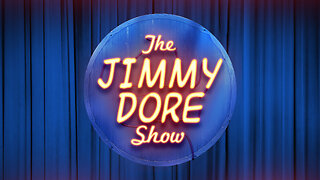Premium Only Content

Puppy with Capone at Cafê Paris
QF stands for Queue Full?Quand une file d'attente est-elle pleine ?(KI ist doof).
There are 4 ways the letter "e" can be pronounced in French: /e/ (as in German "Zeh"), /ɛ/ (as in "Fett"), /ə/ (as in "bitte"), or it can remain silent. It can also belong to a larger group (e.g. "eau"), in which case it is pronounced differently.
Ausprache von ë, è, é, a ê
Diacritics are used only when the required pronunciation differs from that prescribed by grammatical rules. You can read about these rules in a separate article.
Ë with trema (two dots, le tréma in French) means that the "e" is pronounced like /ε/ (as in "bold"), regardless of its "environment". This letter is used when the "e" would otherwise look like it was part of a larger group. For example, Noël ("Christmas") is pronounced /nɔεl/ (no-ell), whereas "noel" (a non-existent word) would be pronounced as /nœl/ (nöl).
Other letters can also have the trema, e.g. naïve ("naïve") is pronounced /naïve/ (as in English), but naïve (a non-existent word) would be pronounced as /nεv/ (näw).
È with gravis (accent grave) is pronounced like /ε/ (as in "fat"). For example, in père (father), "pe" is an open syllable (see the other article), and without an accent it would theoretically be pronounced like /pəʁ/. However, since it is pronounced /pεʁ/ (perr), it must be written with a gravis.
The letter "è" is also used in the conjugation of verbs. For example, acheter (to buy) is pronounced as /aʃəte/ (a-schə-tee) or /aʃte/ (asch-tee), but j'achète is pronounced with a schwa, which is made clear by the gravis.
É with acute (accent aigu) means that the "e" is pronounced like "e" in "toe" (i.e. /e/). It is used when the pronunciation requires it, but the typographical rules dictate a different pronunciation. Remember that you only write "e" (without the acute) if your pronunciation is determined by grammatical rules, e.g. in the endings "-ez" and "-er" of verbs.
Ê with circumflex denotes an "e" after which another letter was written in the past (usually an "s"), but which is no longer written in modern French. For example, être ("to be", the verb) used to be written estre, where you can see the Latin origin esse, which you can also see in the German word "Essenz".
Since "ê" actually stands for "it", the syllable is closed with the "ê", and therefore "ê" is almost always pronounced as in "bold" (i.e. /ε/). If you think of "it" instead of "ê", you can often deduce the meaning of an unknown word, especially if you also speak English: forêt = "forest" = forest, forest; fête = "feste" = festival; intérêt = "interest" = interest and many others.
In the same sense, the circumflex is also used for other letters, e.g. île = "isle" = island, hôtesse = hostesse, hâte = "haste" = haste.
https://twitter.com/JakubMarian
---------------------
#1: Keep it short, sweet and relevant.
Webinar titles play an important role in helping people make in-the-moment decisions about what content to engage with – whether that action is clicking on a promotional email, registering for a webinar or watching an on-demand recording. As a result, your title should communicate the webinar’s core value prop.
A good webinar title doesn’t leave the audience wondering what they’ll gain from watching it. Your best webinar titles answer a critical question or help your audience achieve a valuable goal.
Creating impactful webinar titles is especially important because the title influences many areas of promotion – showing up as subject lines, appearing in search engine results or getting embedded in brand messaging. Keeping a title within 60 characters is a good rule when it comes to avoiding any embarrassing cutoffs in email promotions, but subject lines on mobile devices can become cut off after 20 to 30 characters, so both should be considered when drafting titles.
Frontloading keywords, phrases and relevant messaging is key to quickly capturing your audience’s attention! If you feel you have to go longer than 30 or 60 characters, make sure you won’t be losing the most valuable part of your subject line if it’s cut off.
For an example of a bad webinar title, consider this one: The Competitive Benefits of Enacting Digital Transformation for Your Customer Experience & CRM Workflows. The title is too long, the term digital transformation is vague and the title offers little value to viewers outside marketing buzzwords.
Instead, use a quality title like Top 7 Advantages of Integrating Chatbots with Humans in CX Workflows, which is much more specific about what viewers will gain by attending, offering concrete value to convert potential viewers.
#2: Don’t rely on clickbait.
We’ve all seen them before – webinar titles or subject lines that try to be funny or stand out from the pack but end up falling flat. Some humor is appropriate in the right webinar, but when it comes to titling them, it’s best to avoid trying to be too clever.
A good webinar title lets the content drive interest, instead of relying on humor or puns that might be misinterpreted. Additional elements you should use very sparingly when crafting your webinar titles are region-specific idioms (i.e., “knock it out of the park”), frequent exclamation points and emojis. These elements often detract from the message and can be read as less professional to viewers.
#3: Use quality keywords in your title.
Choosing the right keywords impacts everything from SEO performance to audience interest. You want to write a title that has keywords people are searching for and that matches the intent of the search. This will make your webinar more discoverable and drive registration and on-demand viewership. Leveraging an SEO tool can help you determine what the strongest keywords are that match the intent of the searcher (and your target audience) and drive significant interest each month.
Here's an example of a webinar title that may drive poor SEO outcomes: AI: The New Core of Modernizing, Optimizing and Boosting the Efficacy of Infrastructure Systems. This title is super vague, uses too much high-level language and isn’t problem-specific. As a result, the webinar may drive activity, but much of this activity may be tied to individuals outside of your target audience.
Instead, opt for titles that are specific in the problems they seek to address, like How AI-enabled ITSM offloads tedious tasks from IT pros’ plates or use some of today’s top AI keywords like Drive ROI on machine learning, generative AI and NLP investments.
Keep your audience in mind and choose keywords that fit their audience profile. Be sure to include keywords in the webinar abstract in addition to the title. This approach will lead to success with both search algorithms and audience members.
#4: Tap into buyer behavior to better connect with your audience.
Most marketers are familiar with using the concept of fear, uncertainty and doubt (FUD) to drive connection with their audience. Concerns about security, impending compliance and regulation deadlines and rising costs are all driving strong content performance with tech and B2B professionals.
That’s because by showing you understand the concerns of your audience, you build trust – all before they even sign up for your webinar. FUD isn’t the only way to put yourself in your buyers’ shoes – and it should be used sparingly to avoid having the opposite effect – causing your audience to disengage with your content. By including signals that you know your buyer – their interests, needs and pain points – in your title, you’ll attract more of your target audience.
#5: Use established formats to drive registrations.
When it comes to titles and subject lines, certain established formats have been shown to drive stronger open rates. Lists, “how-to” videos and market trend overviews are tactics that are really successful in driving audience engagement – and these approaches can be translated into webinar titles. These tactics are based on our own team of marketing copywriters who have years of experience crafting eye-catching content titles and subject lines, and who’ve distilled their expertise into the core principles mentioned above and in this list below.
-
 1:10:55
1:10:55
Donald Trump Jr.
2 hours agoBREAKING NEWS: My Father Revokes Biden-Maduro Oil License, LIVE with Maria Corina Machado | Triggered Ep.220
49.2K90 -
 LIVE
LIVE
The Jimmy Dore Show
1 hour agoTrump AG Pam Bondi WON’T Release Epstein List! Corp Media ABANDONS Greta Thunberg! w/ Chris Hedges
10,484 watching -
 LIVE
LIVE
Sarah Westall
51 minutes agoX-Files True History, Project Blue Beam, Cabal Faction War w/ Former FBI Agent John DeSouza
446 watching -
 LIVE
LIVE
Dr Disrespect
8 hours ago🔴LIVE - DR DISRESPECT - NEW PC VS. DELTA FORCE - MAX SETTINGS
2,849 watching -
 49:04
49:04
Lights, Camera, Barstool
1 day agoIs The Monkey The Worst Movie Of The Year?? + Amazon Gets Bond
8.23K1 -
 24:19
24:19
Adam Carolla
20 hours agoDiddy’s Legal Drama Escalates, Smuggler Caught Hiding WHAT? + Philly Eagles & The White House #news
15.8K3 -
 10:12
10:12
Mike Rowe
2 days agoClint Hill: What A Man. What A Life. | The Way I Heard It with Mike Rowe
15.7K5 -
 1:31:52
1:31:52
Redacted News
3 hours agoBOMBSHELL! This is war! FBI whistleblowers reveal Epstein files being destroyed? | Redacted News
96.2K249 -
 48:55
48:55
Candace Show Podcast
4 hours agoSTOP EVERYTHING. They FINALLY Mentioned ME In The Blake Lively Lawsuit! | Candace Ep 152
70.6K89 -
 1:02:51
1:02:51
In The Litter Box w/ Jewels & Catturd
23 hours agoWhere are the Epstein Files? | In the Litter Box w/ Jewels & Catturd – Ep. 750 – 2/26/2025
61K53